Home » Web Tools
Category Archives: Web Tools
A Box of Fun Things
Out of all the things to be paired with cutting-edge technology, that last thing imagined had to be cardboard. Yet here it is, making education better.
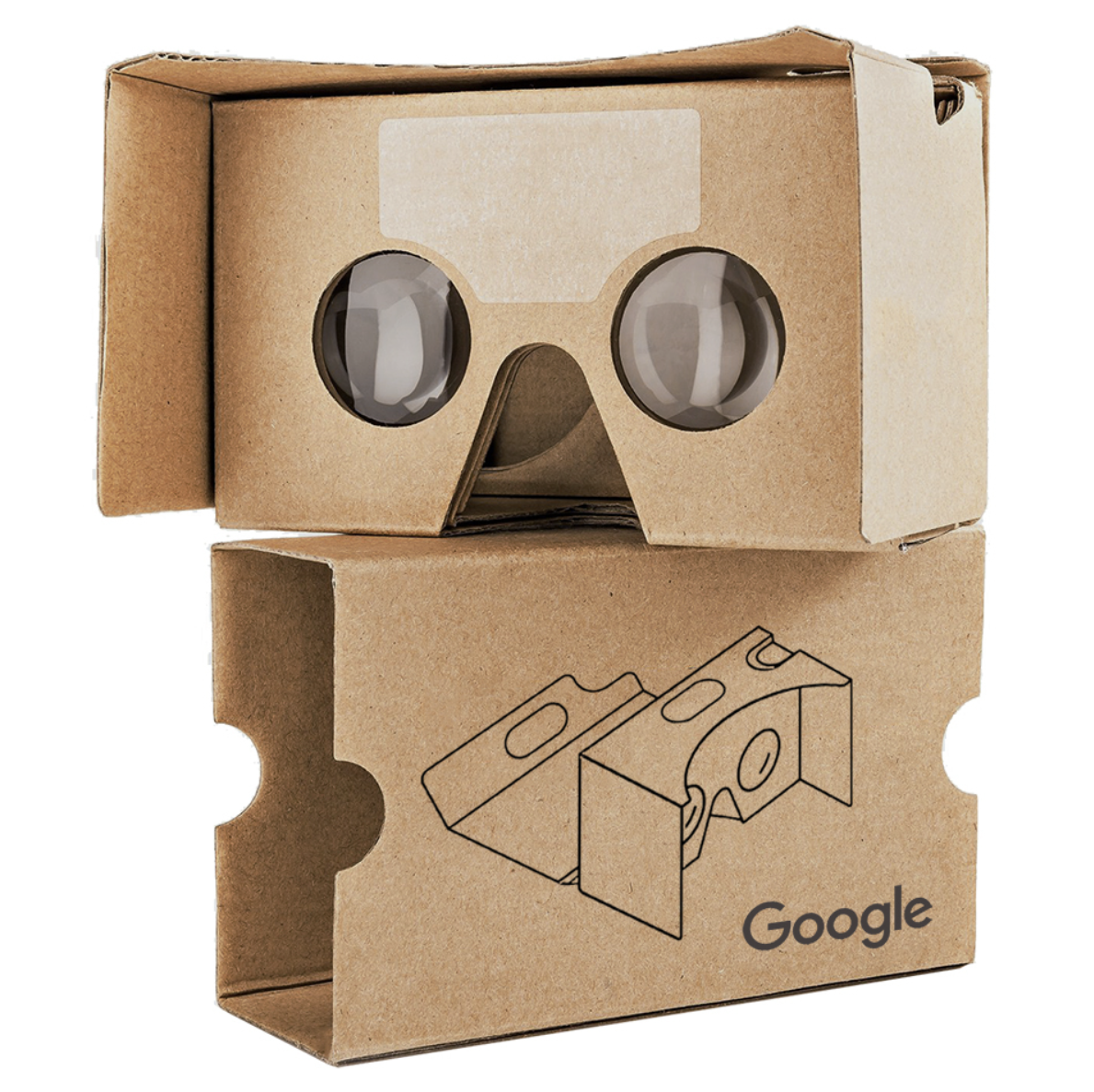
In 2021 smartphones have almost become as common as cardboard has; Google was smart enough to combine the two into an intuitive and enjoyable experience for anyone who tries it. While it is a form of entertainment, this VR, virtual reality, the experience can be a vital tool in the classroom when paired with programs like Google Earth VR.
VR is such a unique experience because the user becomes a part of whatever setting they choose, allowing for someone to get into an intense battle on the ground, swim with fish in an ocean, walk through a haunted house, play a sport; the possibilities are limitless, well for those who can afford it. VR headsets are not cheap, usually ranging from $200+. If they are so expensive, how can they be used in the classroom? Google has the answer, its Cardboard platform, which uses literal cardboard or other cheap materials to create a viewing lense similar to one high tech companies have like iTechArt (New York, USA) or Oculus VR (California, USA). This means the price drops almost 100% to something affordable for say, a whole classroom full of students.
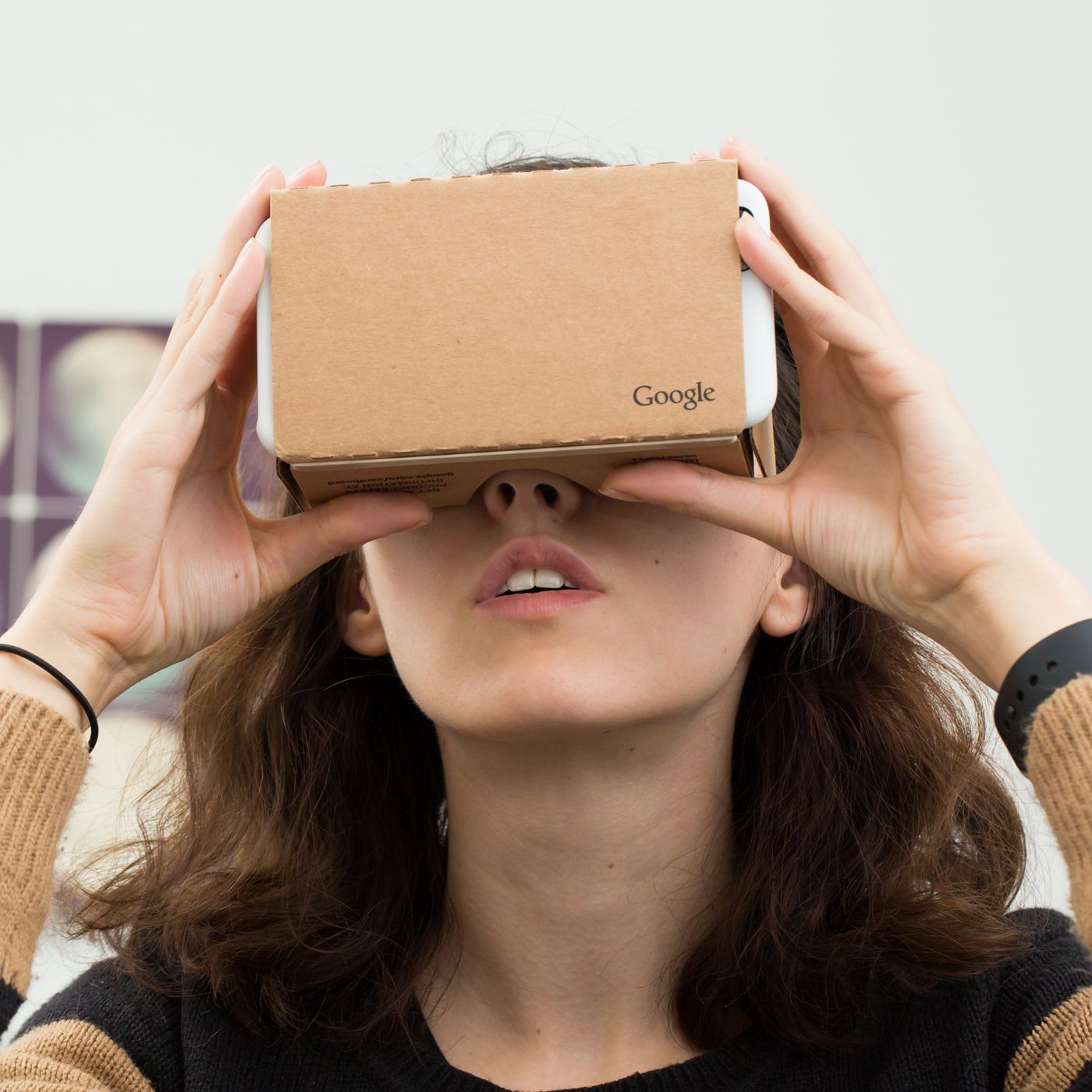
As a soon-to-be social studies educator, it is my job to educate my students on the entire world around them, not just their local community. While these students may never travel outside their state, Google Earth VR allows them to travel any way they want to anywhere they choose. Walk, fly, teleport; however students choose to get somewhere, they are able to immerse themselves wherever they go, which is essential when framing a history or geography lesson. Google Cardboard really helps students with geography because they are able to use their smartphone and virtually walk around anywhere they want, which is way more helpful than staring at a map.
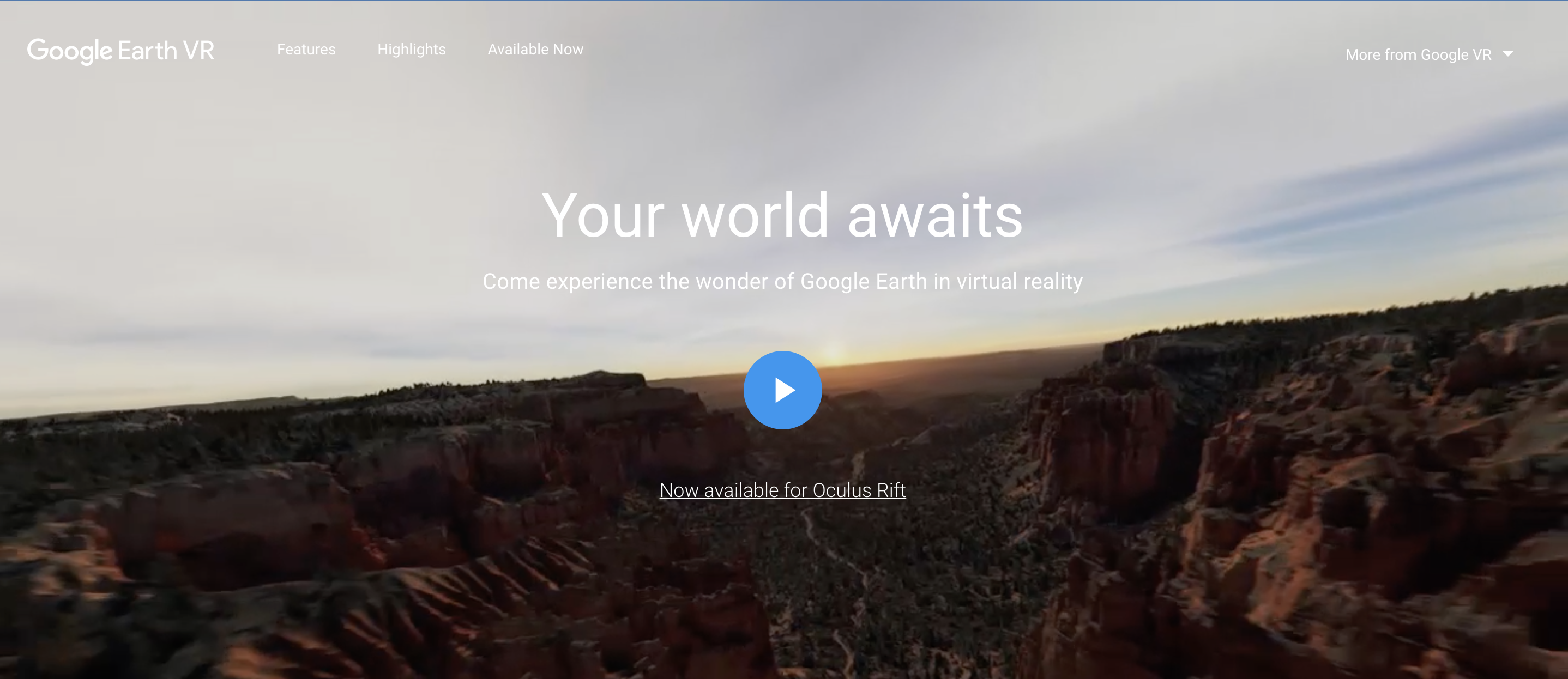
What are you waiting for?
There’s a whole world out there to explore.
Get folding!
Tour virtuale: “Il silenzio di Roma”

Manhattan is known to the world as the city that never sleeps, but it’s not the only city that is notorious for its seemingly nonstop lively atmosphere. There is perhaps no city more iconic than Rome, and it’s been that way for thousands of years for a reason. It is the cradle of Western society, so such a beautiful city shrouded in silence during the 2020 April lockdown was horribly eerie.
Even the statues, in their towering stone glory, looked sad.
And when you consider the reality of COVID-19 in Italy while embarking on this silent virtual tour, it’s hard to feel the city’s usual majesty. The silence, and the stillness, was a mark of death and fear in the Eternal City. As one of the first European countries hit by the virus before there were vaccines and widespread mandates that handled the spread, Italy was devastated.
With hospitals overrun, families with victims of the virus were forced to house their decaying corpses in the tight quarters of their apartments while waiting for transport, sometimes for days at a time. Under then-Prime Minister Giuseppe Conte, the country was categorized into color-coded zones: rosso, aracione, and gialla (red, orange, and yellow). Red was the high-risk zone, and at one point in 2020, nearly the entire peninsula was a bright, glaring red. If you had to venture into the piazza for groceries or supplies, you had to fill out a form to present if stopped by polizia.
This scene was that of a dystopia, not the Eternal City.
During an interview with NBC News at the height of the pandemic, Conte told viewers that “We are suffering very much.” Later, it would be under his strict restrictions managed to get the country’s numbers under control.
Today, although the Green Pass has sparked widespread protests in Italy and abroad, current Prime Minister Mario Draghi has deemed vaccine mandates crucial for stopping the spread of the virus and eventually seeing the population reach herd immunity.
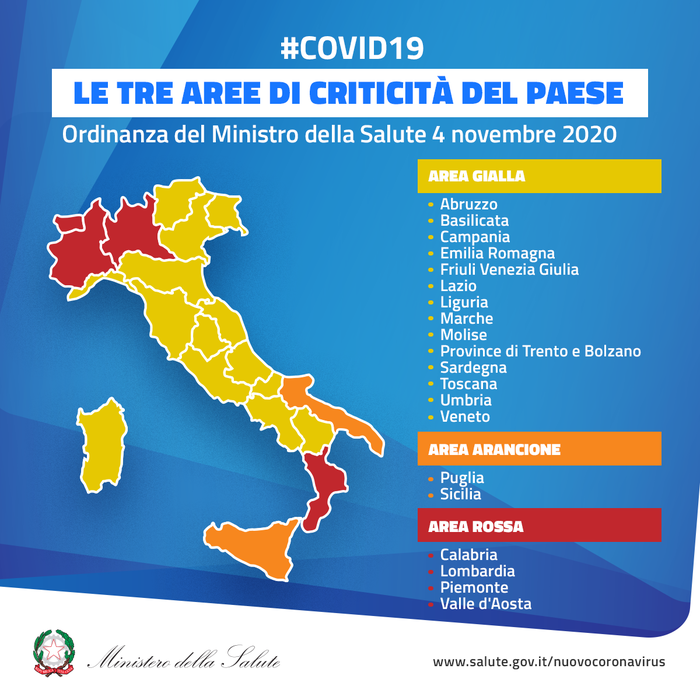
Which marks a much better state of mind than what reigned in the bleak, empty streets of the Italian capital in the virtual tour.
When you think of the Piazza Navona or the Spanish Steps, the iconic images are always riddled with tourists. Sometimes, there are too many tourists, but at least that means there are people. Where there are people, there’s business. Money spent and made. Throngs of khaki-wearing Americans snapping photos of the Trevi Fountain or the Pantheon is a good thing, which even Italians can attest to. Their absence wounded the city’s economy, much of which relies on tourism (until the pandemic decimated its tourism numbers).
These monuments and their surrounding streets usually bustle with the hum of scooters and the blare of car horns. Without the noise, the people, and the activity that makes this city so great, it seemed like nothing but hollow stone and marble. Occasionally there was an ambulance racing down a road, but that’s not the kind of noise you want. It only underscores the suffering that Italy experienced in April 2020, and although the virtual tour is worth viewing, it’s not worth repeating.
Rome in the video is not the city that the rest of the world knows and loves.
However, that does not mean that it can’t be used for global collaboration in an educational setting. If one wants to teach students the reality of what happened to the world in 2020 through hands-on projects and other tools, this tour certainly provides a raw view. If the home of the Colosseum and the Roman Forum went silent, students of the future will realize just what a dark period of history this was.
Particularly when we are back to some semblance of normalcy, and COVID-19 is nothing but a memory that makes you say, “Jeez, do you remember that?”
Hopefully, we will reach that point soon.
So here’s to ending 2021 and starting 2022 with a bang. Hopefully, Rome (and the rest of the world) will be back better than ever before. It’s a cheesy cliche to say, but what doesn’t kill you makes you stronger, and that’s never been more true for the people of Italy in the last few years.
Virtual Reality using Google Cardboard in the classroom!
Have you heard of Google Cardboard? or are you familiar with the various features it offers? If not your in luck because today I will be covering its awesome features and how teachers can use it in their classrooms!

and price of each.
So what exactly is it? Well according to Google it is, “…an inexpensive handheld device that powers a virtual reality (VR) experience using almost any smartphone running Cardboard-enabled apps”.
To use Google Cardboard you will need, a Cardboard viewer : hardware that is used to view VR content with a smartphone. A smartphone: typically supplied by the consumer and an Android app: created by third-party developers.
You can also make your own using the instructions provided by Google:

The features of the Cardboard viewer include:
- Holder/enclosure for smartphones with screens up to 6 inches that assembles (and disassembles) in just 3 steps
- A button for performing actions with Cardboard-enabled apps, designed to work with most smartphone
- High-quality lenses made of durable material
Click HERE to read where I got this information.
Apps you can use through VR include but not limited to are Google expeditions, Veative, Nearpod, Youtube 360 videos, Google Earth Tours, Google Lit Trips etc.
In this blog post I will be focusing on Google Expedition and it’s great effects in the classroom. (Now discontinued, read article HERE)
Watch how VR has and can potentially change how teachers teach and how students learn!
Resources for teachers to know when learning about Google VR
I have included lesson plans using Google VR/ Google Cardboard below:
https://www.teacherspayteachers.com/Browse/Search:google%20cardboard
VR will contribute to successful global collaborations through teaching students to have cultural understandings, global awareness, and a historical perspective. Tools like Google Cardboard give students the opportunity to transport to other countries and immerse them in historical civilizations based on what the teacher has assigned or has included in the lesson plans.
Thanks for reading! Be sure to follow me on Twitter @smirnah1 for updates!
Out of Eden & Into the Classroom
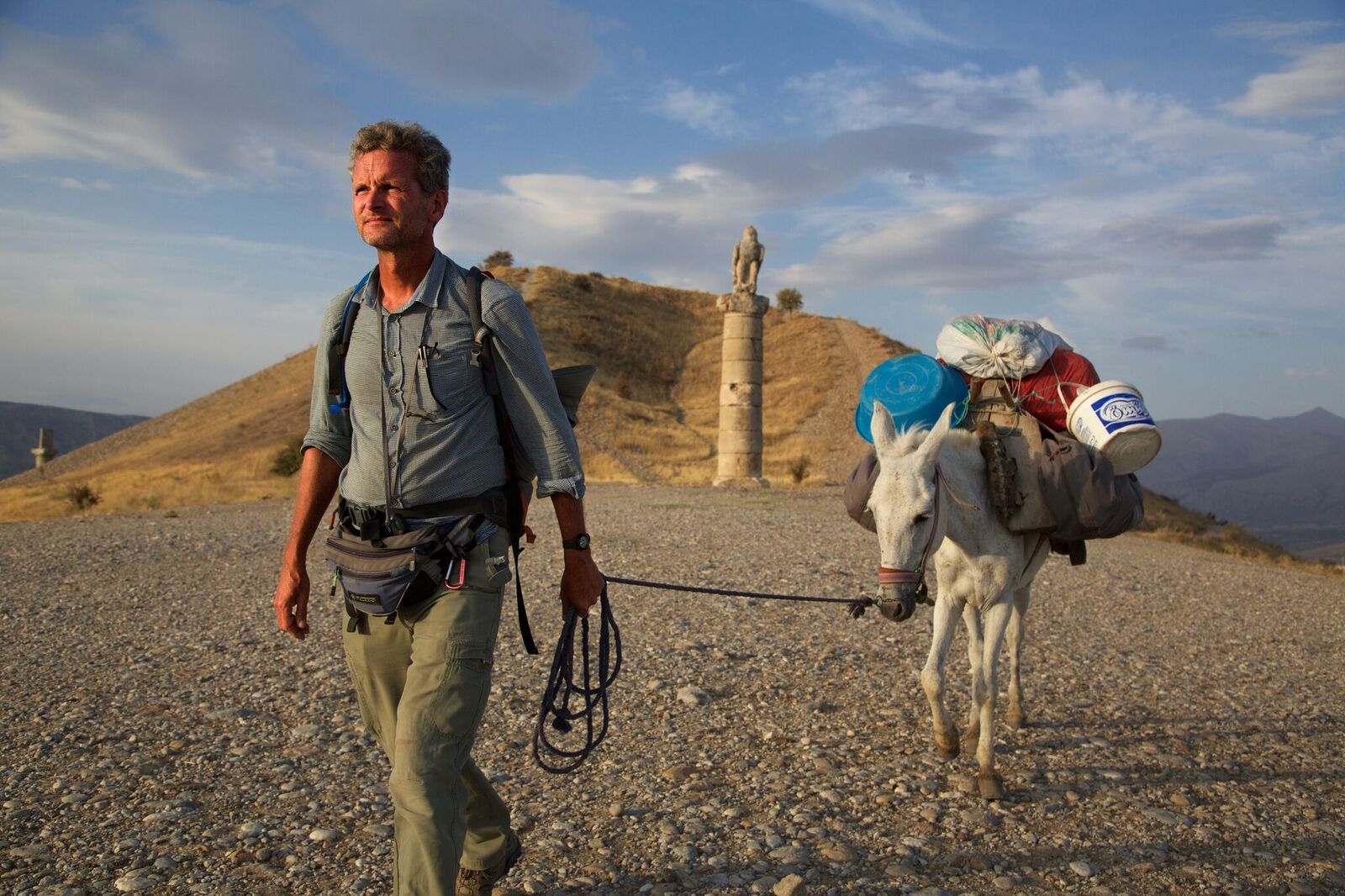
Before visiting this website, I had never heard of the Out of Eden Walk, and I am honestly surprised considering how much of a feat this is. A modern day Odysseus, Paul Salopek is currently on a 24,000-mile odyssey from Africa to the southern tip of South America. It is special because he is following the path our ancestors made as they migrated across the Earth. Along the way he is covering the major stories he encounters from the eyes of the people I didn’t even know existed. From climate change to technological innovation, from mass migration to cultural survival, Salopek is giving voice to the people who inhabit the places he is journeying through every day.
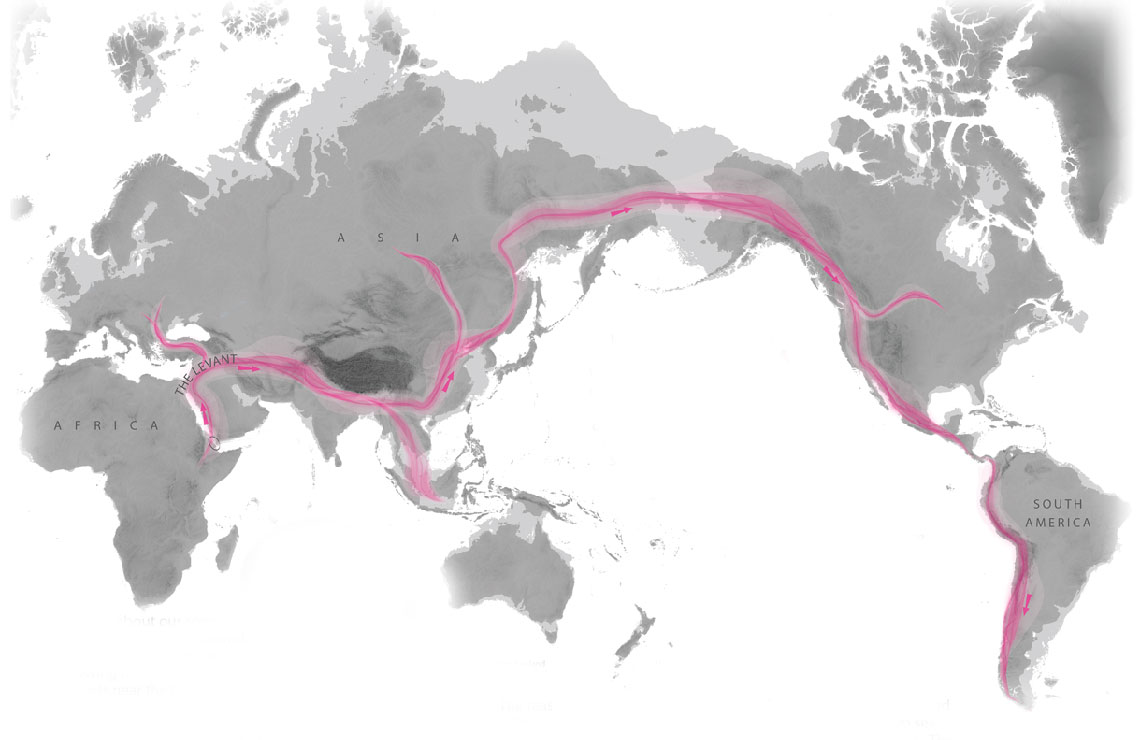
Walking for several years now, Salopek has obviously been to many places. Alongside gaining popularity for this odyssey, he has also inspired educators across the world to teach globally. As a future teacher, I am going to have the task of teaching students about the world ahead of them, and that means more than just learning about their city, state, or even country- it is about teaching that the world is way larger and has so much more to offer than what is on TV or in the news. So much of today’s society is based upon quickness and cheapness, rather than time and quality. Paul Salopek can simply visit big named places in each of the countries he visits and be done in a few months. Instead, he is emphasizing the slowness of it, which really brings meaning to his work and allows for those genuine human interactions. In this blog post, I am going to talk about a few of the place’s Paul has been to.
The first stop for us is the most recent one for Paul: The Gaoligong Mountains, in Yunnan, China.
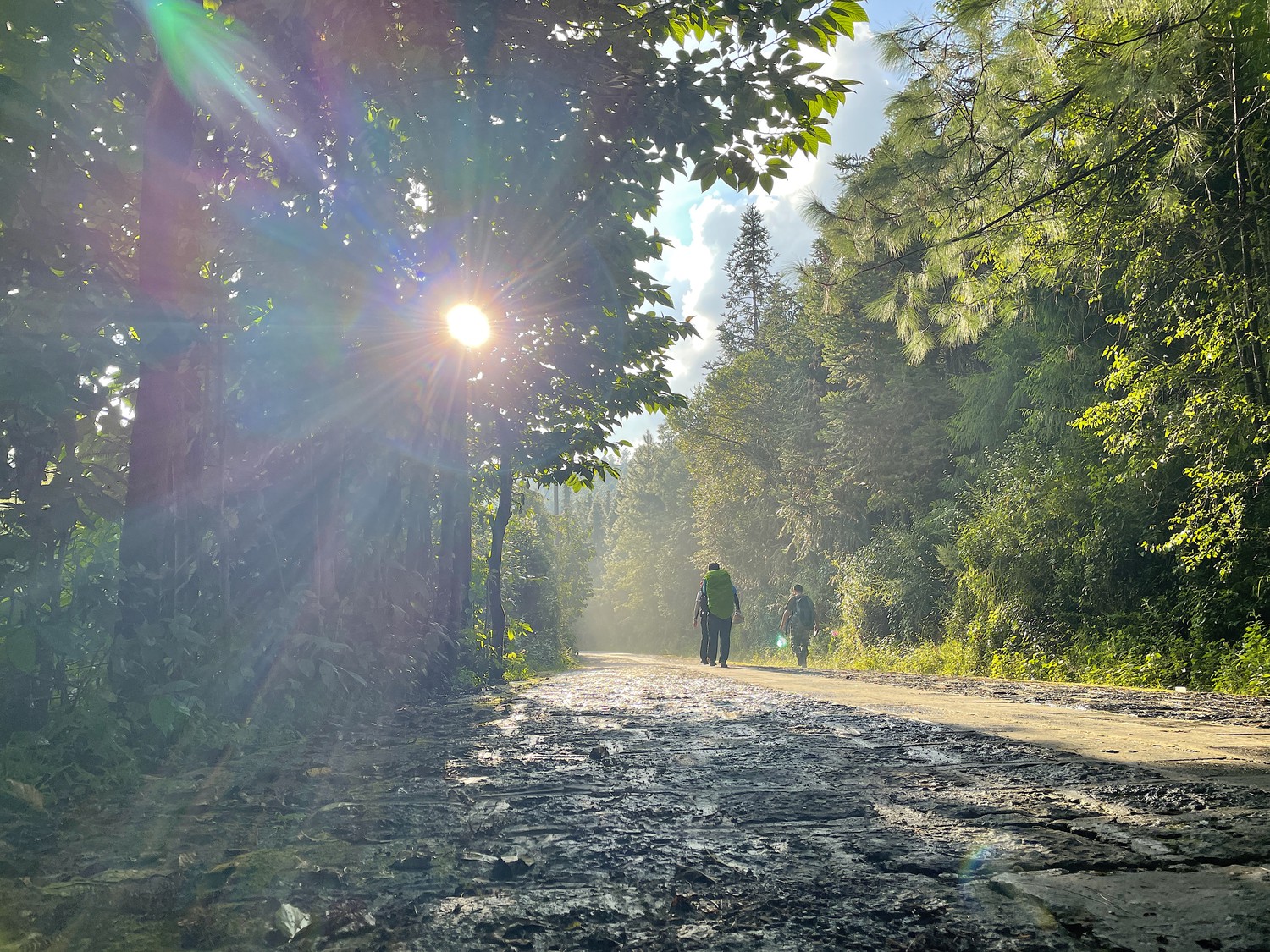
According to Salopek, around 5,000 species of plants, around 700 species of animals, and 1,690 different insects find refuge in the mountain range. One of his guides says the forest floor was so covered with salamanders, the only way he could leave the forest was by walking through creeks. These places are untouched by technology and because of that are often overlooked. That is no problem for those who inhabit areas near the mountain range, in fact, they prefer it. An administrator of the mountain range spoke with Paul and explained there is a saying that goes, “You cut my trees? I cut your hands”. They are very passionate people and have the utmost respect for nature, something that we should all learn from and admire. Yang Xue Liu is a 74 year old man Paul encounters in a village in the mountain range. He sells medicinal herbs and each one has its own purpose. He explains that if people knew plants, they would use them and that is something very important in a science classroom. A teacher could give a whole lesson on plants or nuts that are safe to eat, which can help students learn how to use the environment around them and not always rely on processed food.
The next stop is a step back into time for Paul, but a new future for me and those alike who have no idea a place, named Baku, Azerbaijan, exists.
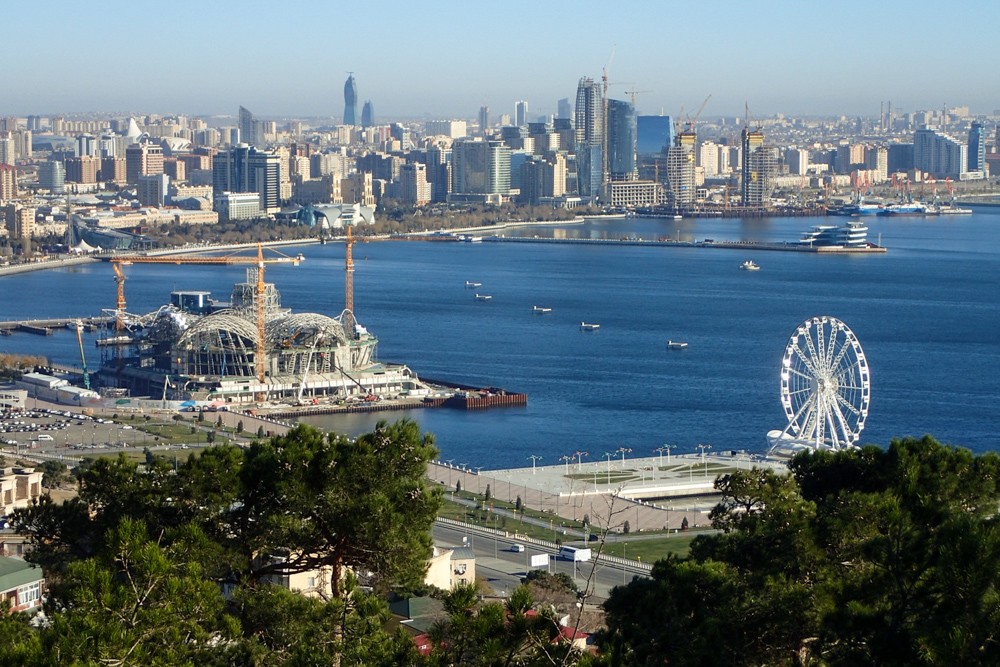
Baku is home to many different empirical influences, from Russian to Persian, Ottoman (Turkish), and even British. It is also home to apparently the world’s largest KFC: a fact I did not ask for, yet did not know I needed to hear. This city has a reputation for taking in widely different influencers and somehow manages to create its own spin on it. This kind of city would be great for a social studies or history class, as it is proof that we live with history everyday. Paul links a walking tour of the city that I think greatly shows the user just how diverse and culturally rich this city is.
Continuing with the theme of being unexpected, the last stop in this blog is where Paul Salopek started, Herto Bouri, Ethiopia. It is interesting to read what expectations he had for his journey, and how excited he was. Salopek in 2013 predicted to be in South America by 2020 and it is crazy to think about how much of the future is unknown especially writing this blog in 2021 dealing with the Covid-19 pandemic. His journey beginning reminds me of beginning school for the first time as a 6 year old. Like Paul, I had no idea of the journey I was in for, and I still do not now. Just as my parents and other adults have done before me, I walked through school everyday, enjoying the ride and discovering new things about myself and others. Now, on the cusp of ending my school career as a student, I begin a new walk in school, as a teacher. Like the guides that help Paul on his journey, I too am now a guide for the students who are now where I once was. Keeping him and his journey in my thoughts, I will use this Walk of Eden as a teaching point about the globe, but also one about ourselves. A quote by a fifth grader in the U.S.A. about the Out of Eden project really sums up the importance of this project: “I think when exposed to the details of others’ lives, you start noticing your own…”—Annie 5th grade student, Massachusetts, USA.
What I explored on my Out of Eden Walk
According to the National Geographic, Out of Eden Walk is a 24,000-mile odyssey, decade-long experiment conducted by Paul Salopek. We as readers learn that, “[He] is walking the pathways of the first humans who migrated out of Africa in the Stone Age and made the Earth… [and] is covering the major stories of our time—from climate change to technological innovation, from mass migration to cultural survival” Click HERE to find out more. Paul documents and uploads photographs, videos, audio, etc. and records,” human life at the start of a new millennium as told by villagers, nomads, traders, farmers, soldiers, and artists who rarely make the news.” Click HERE to read more.
I explored the “Children’s Crusade” article focused on the Shilo Settlement in West Bank. In this article, we learn about Paul’s encounter with an Israeli settler named Marc Prowisor who takes him to a Palestinian farmer named Khaled Daraghmeh. Below are two images of the men.


The article states that the “American-born Jew, Prowisor is the security director for the One Israel Fund, an organization that provides logistical assistance to Israeli settlements occupying the West Bank. I have paused the walk at Shilo because I wished to visit these controversial outposts, to meet an Israeli settler. Prowisor’s community, and others, is trying to evict Daraghmeh from the land he farms, claiming he is a squatter. Daraghmeh says the hay-colored fields have been in his family for a century. This dispute is years old. The two men are categorical enemies”. (Salopek, National Geographic Society, 2014)
As reader we learn that there is a lot of conflict more than ever before between the Israeli and Palestinian youth.
I explored the Jeddah, Saudi Arabia walk, a total distance of 63 miles (101 KM). Click HERE to find out more.
During the walk they stubble upon a gardener:


Image by: PAUL SALOPEK

Click HERE to read more.
I also explored Tbilisi, Georgia in the Walking Tbilisi article. It is said that Tbilisi has kaleidoscope history of invasion and reconquest.

They are having a meal in Jerusalem. I found this image interesting because of the star of David and the Jewish words.
Here is an image of the inside of the Sioni Church

“The cross of St. Nino is locked behind glass. Her cross is made of two grapevines, lashed with her own hair”
Click HERE to view more images of Tbilisi, Georgia.
Thanks for reading! Good Luck to Paul Salopek on this journey! His global walk resumes in Yunnan, China after being halted by the global pandemic. Click HERE to read about where he is walking now.
WE Can Change the World
When people have ideas to make the world a better place, most of the time if they are not wealthy or have a position of power, their idea never takes off the ground. That all changed with WE, an international charity that empowers people to make the world a better place. So far some of their accomplishments include giving over 1 million people access to clean water and sanitation, 200 thousand children education, and over 14 million dollars fundraised by students supporting local and global issues.

One of the main focuses of WE is in the educational field, specifically supporting teachers with free resources to help empower their students. They have multiple modules that teachers can access through their WE Schools website, which allows anyone to sign up and use their resources with no cost. Thye partner with OneNote, a popular note taking program that I showcased during this screencast. Below is an image of the introductory page to WE Schools, which outlines their mission as well as the features they have.
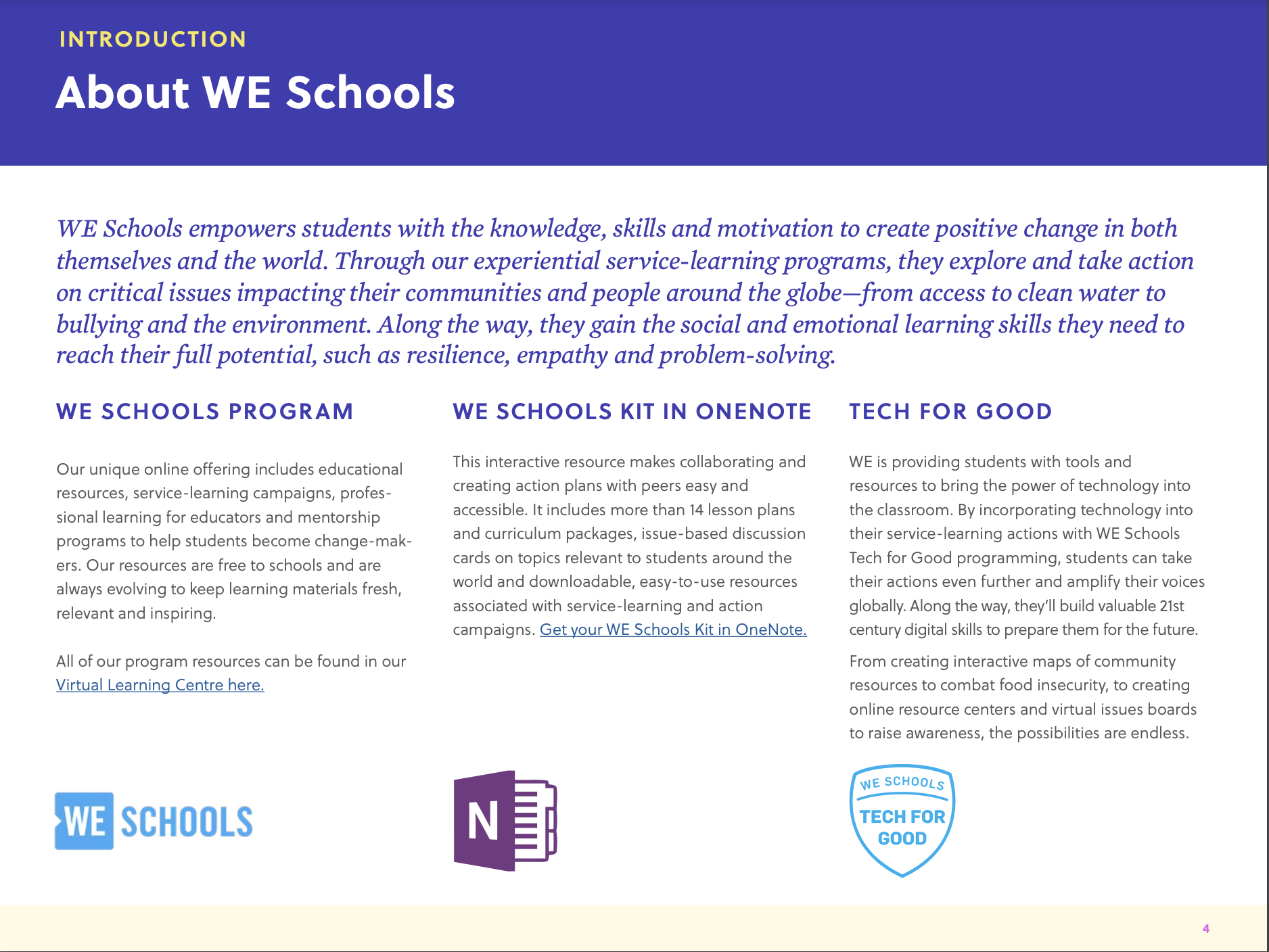
The tool that stuck out to me was the WE Schools Foundational Module, which helps teaches foster a safe and inclusive classroom. Educators talk a lot about how important it is the be inclusive and the benefits of it but sometimes fail to give actual strategies. This module gives tips on how to be supportive, as well as 5 lessons on how to create a caring classroom. For teachers who may struggle with coming up with ideas, this module is the perfect starting point to change their classroom for the better. On the other hand, for teachers who may have become indifferent of students or fail to make changes in their classroom, this module can help them come to understand the importance of inclusion and how WE is helping ensure its success.
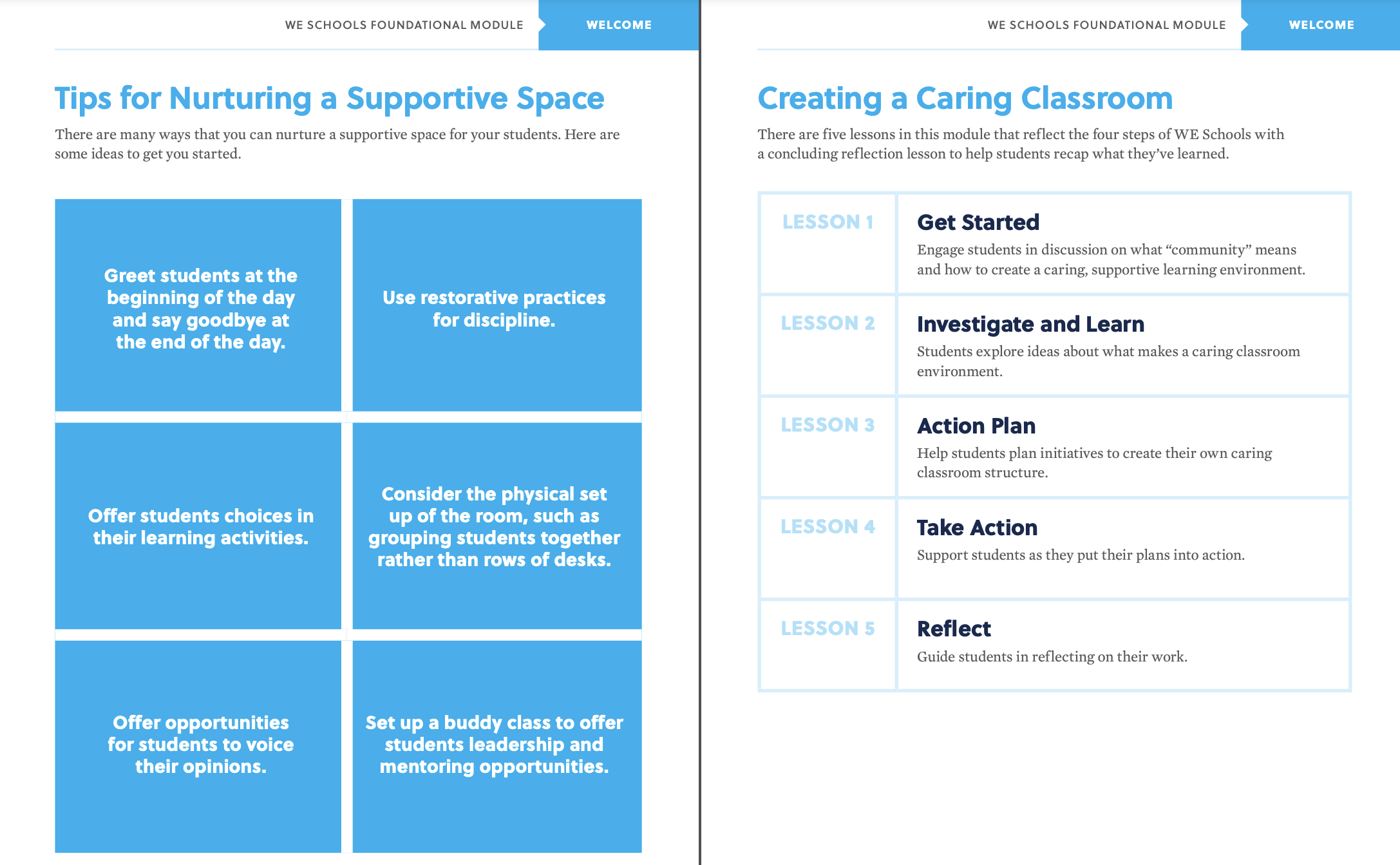
The WE Charity exists to only help make the world a better place and students in our schools are the future benefactors and contributors to it. As a teacher, it is our responsibility to help foster inclusion in our classrooms; the foundational module is where it starts.
Mental health in the classroom
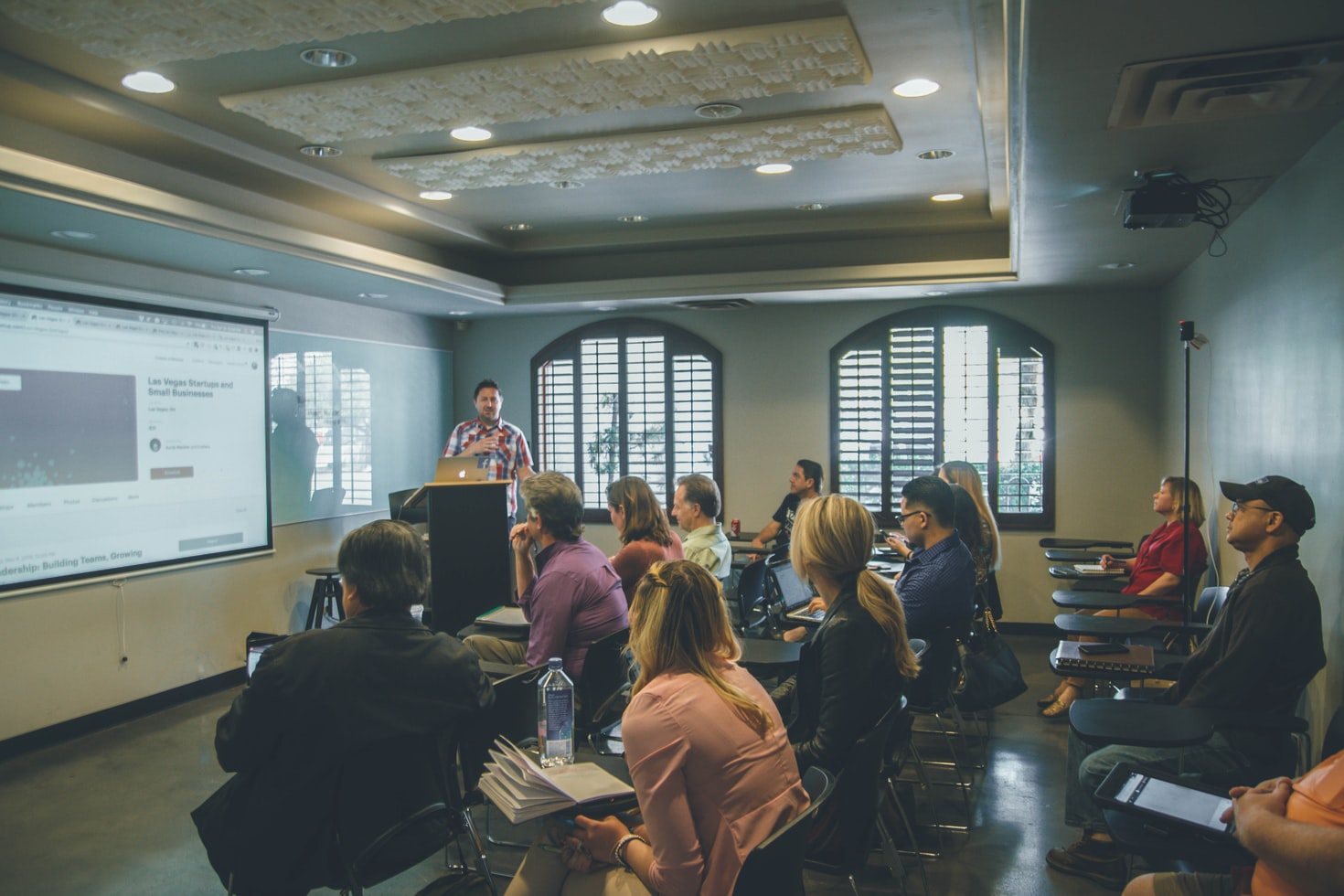
The WE Teachers Social and Emotional Learning Module provide activities and lessons for ways teachers can incorporate emotional wellbeing in the classroom. This is important because it creates an environment of mutual respect for a student not just as a learner but as a person experiencing life beyond the classroom.
This makes for a better learning environment overall and even contributes to the social aspect students experience in school that involves making friends and feeling like they belong. When there is less anxiety surrounding their social life, they have more room to learn better.
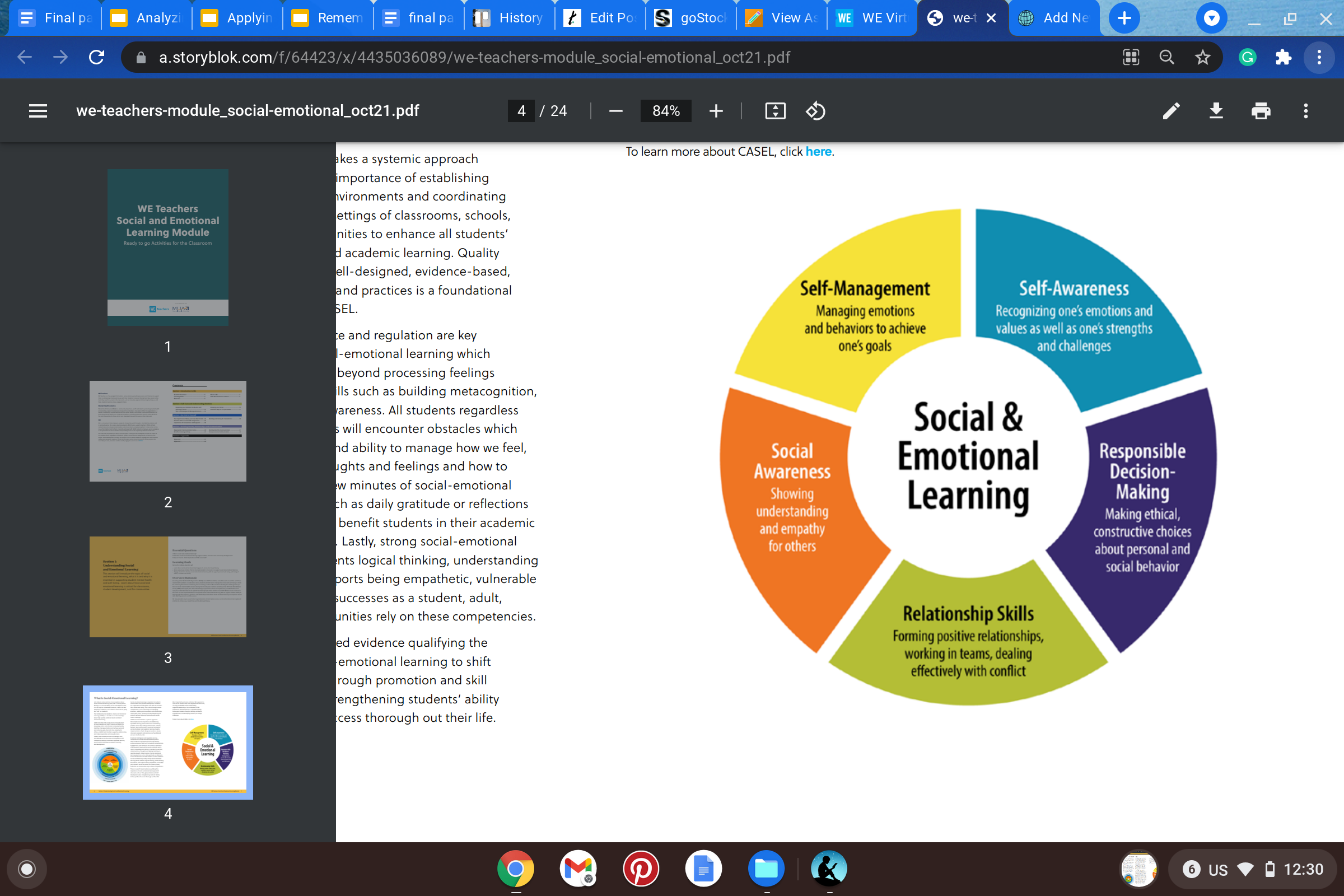
The module also made a point of explaining how this is not a teaching method that goes “soft” on students or is only for handling “misbehaved” students. This is about treating students with compassion and helping teachers understand how to care about every student’s individual wellbeing as a whole.
This is extremely important for developing minds, because many students can live in dysfunctional households, or have experienced trauma that can be triggered at school. It’s important for teachers to know how to avoid keywords or situations that can trigger a student, as well as how to navigate mental health issues in the classroom like anxiety or panic attacks.
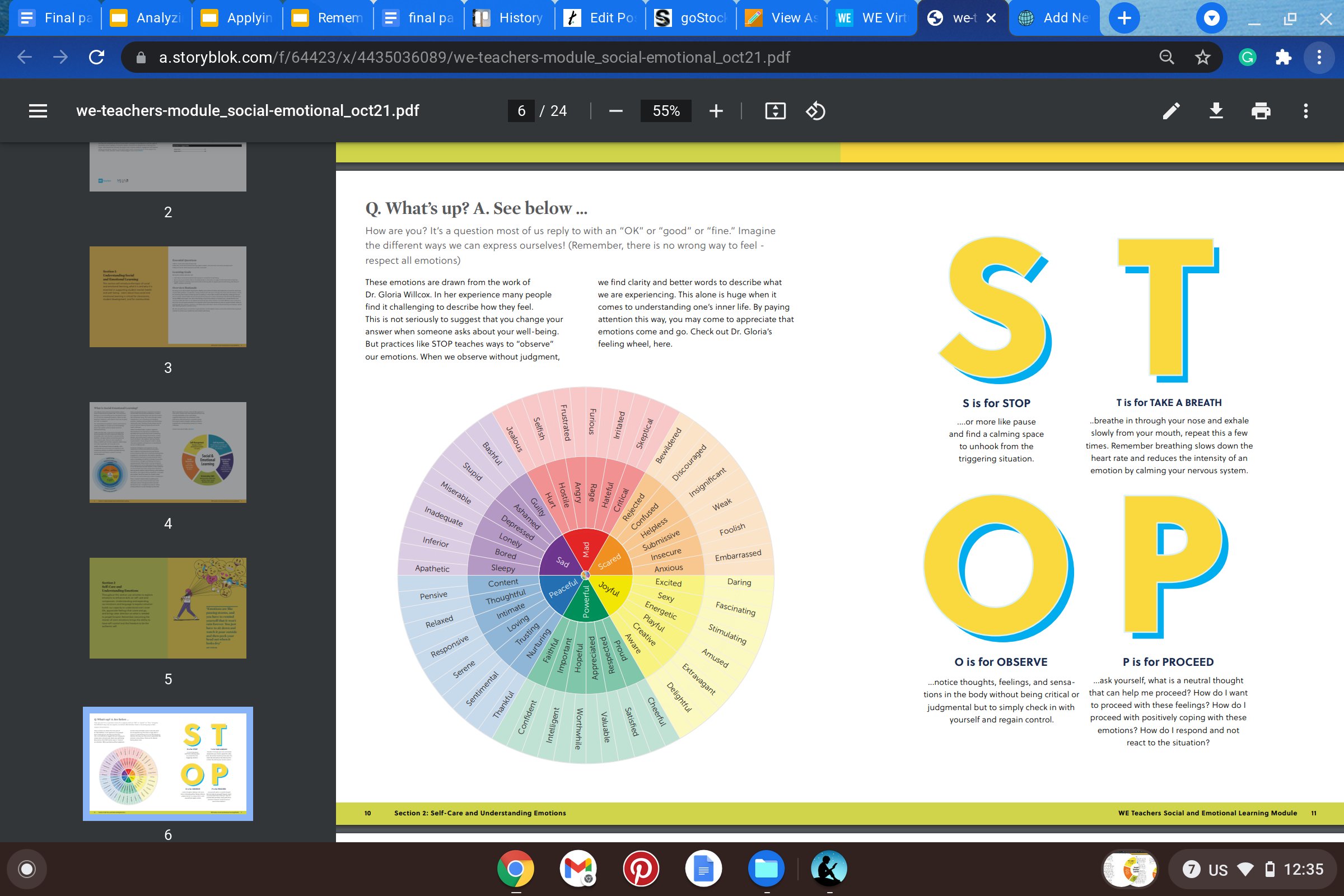
The module also discusses regular emotions that can inhibit a student from learning at their best potential, even if it seems like something simple such as nervousness, shyness, embarrassment, etc. You can never know how much social anxiety, shyness, or embarrassment can inhibit a student from learning at their highest potential or having the right amount of confidence to be outgoing and eager to learn.
This is why this module is so useful in the classroom.
This module can also help forge better relationships between teachers and students, and even students and fellow peers, which is something that WE Teachers consider often when using technology and other resources, as seen in the below tweet.
WE Schools has a lot of other modules that focus on themes of emotional wellbeing. Themes like Diversity and Inclusion, Anti-Racism, and Equity & Human Rights all tie into being aware of the importance of social and emotional health in the classroom.
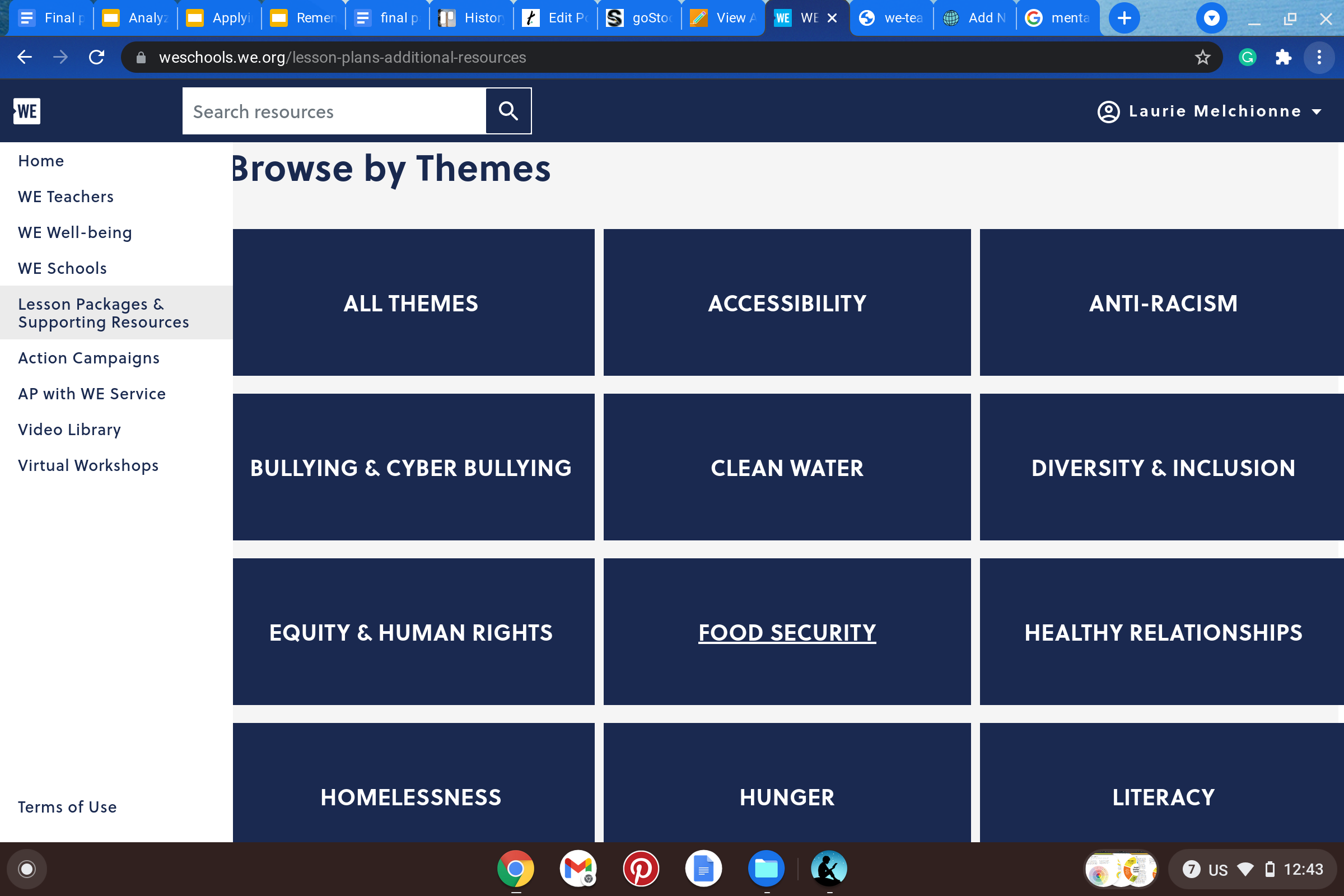
For example, the Anti-Racism module dives deep into racist ideas, responses, where they can stem from, and how to handle inequity in school. It defines different ways racism can occur through definitions of microaggressions, implicit bias, intersectionality, etc. It even covers sexuality discrimination, creating a module that ensures no marginalized group goes unnoticed, and that it can be addressed and handled effectively in real life by educators.
In addition to the modules, WE Schools provides an entire page for action campaigns that can provide students and teachers with resources to address problems in the real world and make their voices heard.
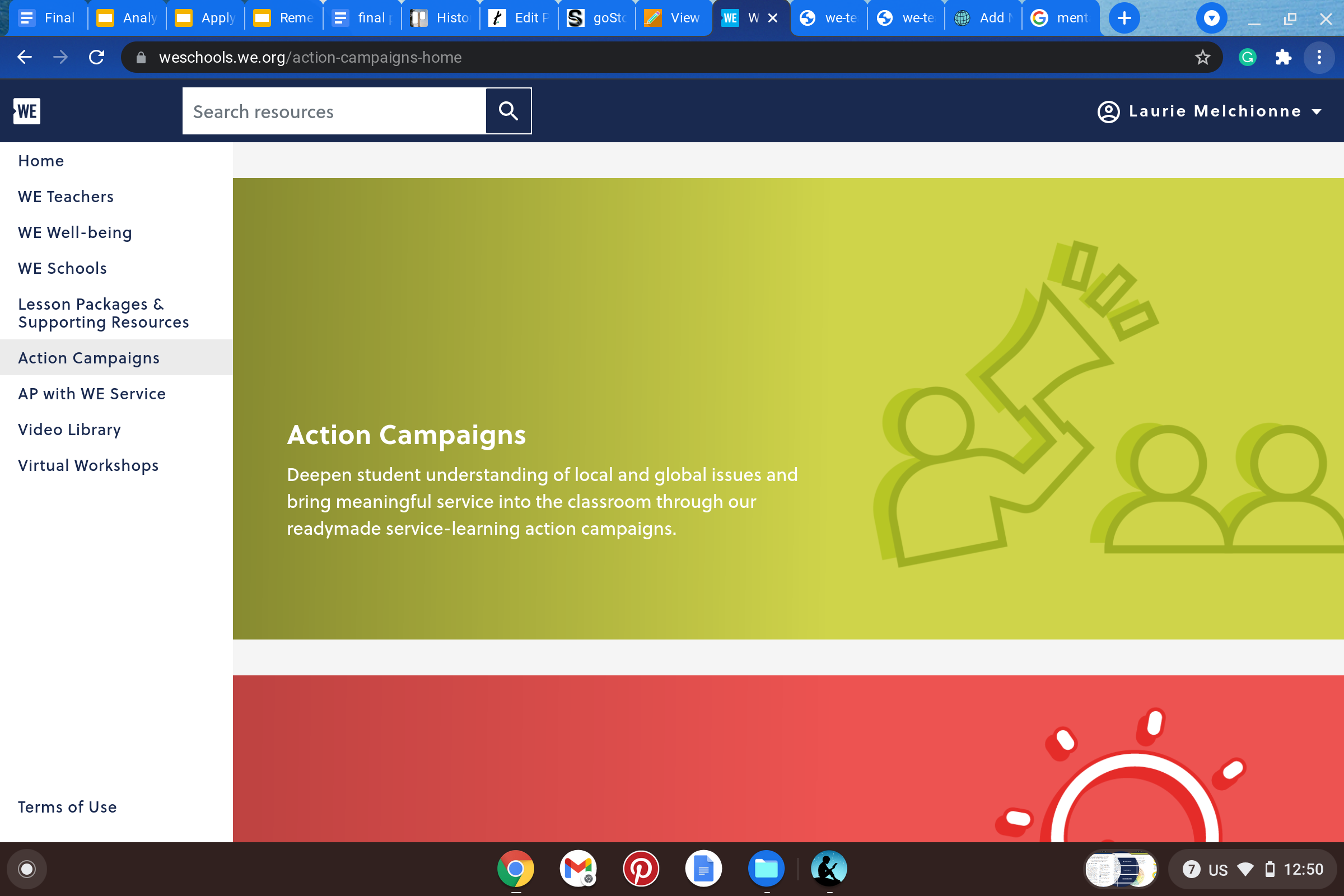
Overall, the website and the modules themselves provide resources that are extremely thorough for students and educators. If there is a topic or a problem in the classroom or even the real-world as it affects educators, this website covers it.
HyperDocs for All
After creating the Google Map for one of this week’s assignments, I started to get a sense of the background work a teacher does for their classes. HyperDocs is one of the ways teachers set up projects, lessons, and even study guides for exams. Little did I know, I have been using them for almost a year now, on the student side of course.

Hyper Docs are a great way to invoke collaboration in an increasingly digital world. They operate outside of time, meaning a student can open one whenever they choose to do so. This can alleviate timing issues during a group project if per say the members can not all meet or do work at the same time. That last part can be applied to any collaborative document, but nonetheless is a major bonus of a HyperDoc.
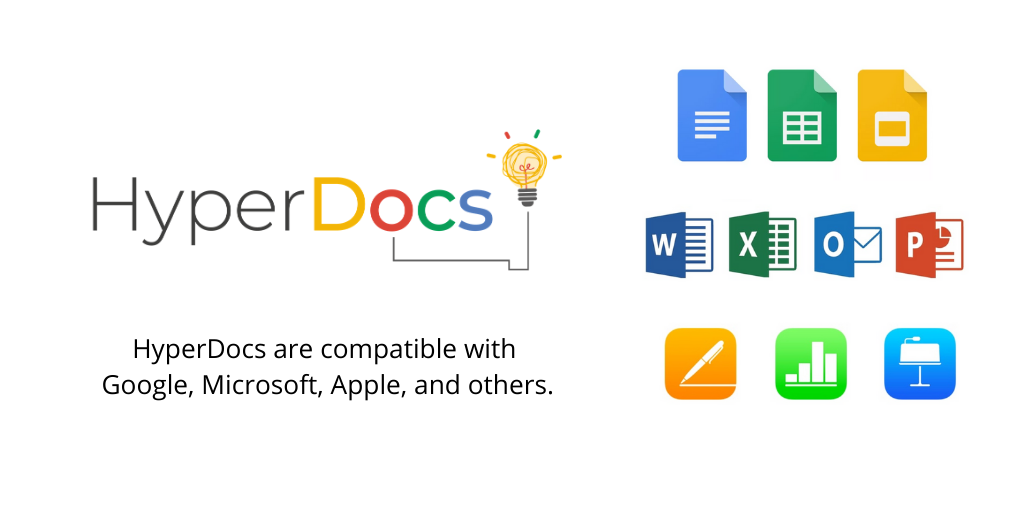
I think what makes a HyperDoc so great is the endless amount of links one can include and the creative way to do it. On the HyperDoc SlideShow I viewed, the author linked a google doc to a strawberry. The design of a HyperDoc is almost as important as the information in it. How a teacher organizes a HyperDoc determines the mindset of the student, as well as reflects on the teacher’s pedagogy. The only possible drawback to using a HyperDocs could be becoming acclimated to them. There is a lot of moving parts which are very intricate, and for teachers who are not used to them, or proficient with technology in general, may have difficulty using them in their classrooms. In the event a teacher makes a mistake or there is something glitchy about it, I said before, they can be edited and added to at any time, which also means teachers can be inclusive as they need to depending on the students using them.
All in all, HyperDocs are becoming a pillar of 21 century education, and I will absolutely be using this tool in my classrooms.
Hyperdocs help promote the joys of learning and long-term success
![[Image description: a young boy learning at a laptop.] Via Unsplash. [Image description: a young boy learning at a laptop.] Via Unsplash.](https://blogs.stockton.edu/webtools/files/2021/11/photo-1597933471507-1ca5765185d8.jpeg)
One of the major aspects of incorporating technology into learning is the freedom of exploration it allows students. When students are given the initiative to do their own exploring on a certain topic, it provides them a sense of ownership and therefore they have a vested interest in learning more.
This is where Hyperdocs can be incorporated into a “Creative Writing Challenge”, which is a Hyperdoc that provides students with resources to explore creative writing. I found this Hyperdoc on the Teachers Give Teachers Twitter page, and clicked on the first title that caught my eye, which was the Sample Creative Writing Challenge Hyperdoc.
Not only does this Hyperdoc give students room to reflect on their own opinions of writing, but it introduces them to Storybird, an online storyboard platform that students can use to make their own interactive, visually compelling stories. The Hyperdoc also provides an article called “13 Stunning Places to Publish Student Art and Writing“. This feature was especially exciting for me because I was never provided with an opportunity to publish my creative writing before college.
Getting published at a young age, no matter the platform or the material being published boosts someone’s confidence in sharing their work. As a writer or an artist, sharing your work is so important. In fact, it’s crucial to kickstart any career in the arts. Also, getting published at a young age is vital to establishing a sturdy portfolio.
It also provides students a place to start and gives them time to be creative and add to their portfolios. This is so important, because when I got to college and had the chance to be exposed to freelance work as well as internship opportunities, the job application always wants a writing portfolio, and I always wish that I had the chance to work on that long before college.
This is why Hyperdocs is important because it directly connects students to the world. It is also the height of interactive learning, especially since it provides students with different platforms for submitting and participating in online discussions and projects. It gives them more than a traditional written assignment to hand in, or a response typed on a Word Doc to be submitted to Google Classroom or even their teacher’s email.
So far in my Hyperdoc research, I have stumbled across Google Forms, Padlet, Jotform, Submittable, and so much more. The more students are exposed to in this fast-paced, technological world, the better; they will be so ahead of the game. Who knows what long-term effects that can have on their professional lives?






Recent Comments